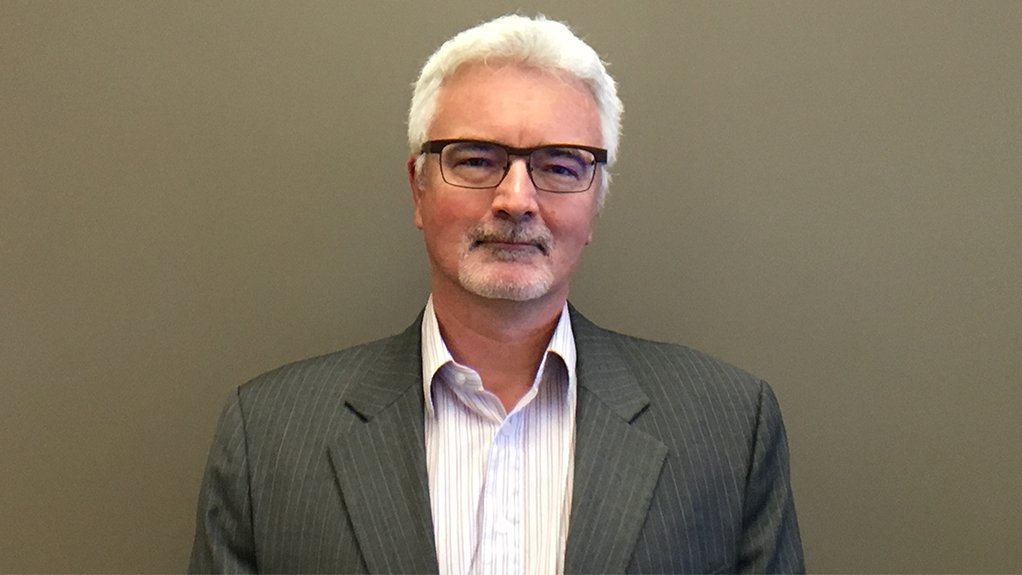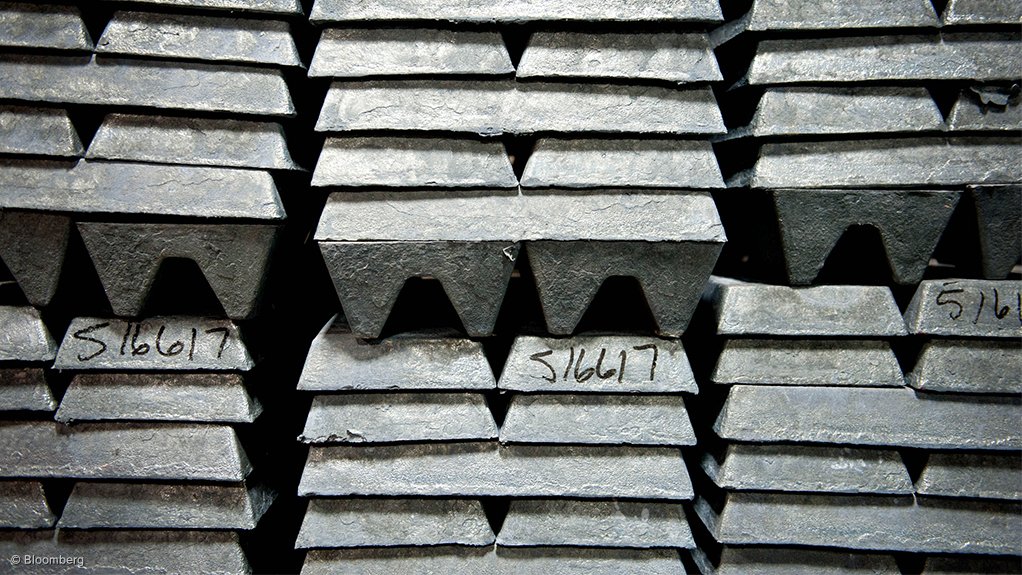VANCOUVER (miningweekly.com) – Following the recent $400-million acquisition of a portfolio of zinc assets from mining major Glencore, Vancouver-headquartered Trevali Mining has become the go-to investment vehicle for investors keen to get in on rising zinc prices.
Supported by strong fundamentals, including a growing supply gap, the zinc price has improved by about 17% since the start of the year, with London Metals Exchange cash prices closing at $3 170/t on Wednesday. This, in turn, has helped boost Trevali’s TSX-listed equity up 26% over the same period.
Trevali president and CEO Dr Mark Cruise believes the zinc price has not yet peaked in the current cycle and will probably continue to rise in the next three to five years. On the back of the closure of several marquee zinc mines, there are no new Tier 1 mines expected to come on line in this cycle, as the time required to build a mine from discovery to production has become so long, to anything between seven and ten years, that no new material production is expected to come on line in the current cycle.
“Demand will continue to rise at about 2% a year to 4% a year, with added demand growth coming from new technologies that require zinc, including the battery and fertiliser sectors, as well as improving demand from the steel sector,” Cruise told Mining Weekly Online in an interview.
Despite the current hot market, he sees a long-term price ranging between $2 800/t and $3 000/t, a level at which all the company’s operating assets are cash-flow positive.
“The crux is that Trevali is able to capitalise on the rising price now. With four operating mines, and about 85% of revenue attributable to zinc sales, the company has become the go-to investment vehicle for investors seeking exposure to zinc.
“We are still looking at mergers and acquisitions (M&A) opportunities, and our current portfolio allows us to take a counter cyclical approach,” he noted.
‘SUPER MAJOR’
Trevali closed the Glencore asset acquisition on August 31, adding an 80% interest in the Rosh Pinah mine, in Namibia; a 90% interest in the Perkoa mine, in Burkina Faso; an effective 39% interest in the Gergarub project, in Namibia; an option to acquire a 100% interest in the Heath Steele property, in Canada; and certain related exploration properties and assets to its existing portfolio, which included the Santander mine, in Peru, and the Caribou mine, in the Bathurst Mining Camp (BMC) of New Brunswick.
Following the African acquisitions, Glencore became one of Trevali’s most significant partners, holding a 25.6% stake in Trevali (up from 4.3% held previously). What is not well known, explained Cruise, is that Trevali also gained access to the full suite of Glencore services, expertise and proprietary technologies, which it will use to leverage further efficiencies.
“This allows us to run Trevali as a ‘super major’, while in fact we are just a small zinc company,” he stated.
Cruise advised that, with the closing of the transaction, Trevali added additional high-quality zinc production to its existing portfolio and has expanded its asset and geographic diversification, taking it to global top-ten zinc producer status, with one of the highest zinc leverage ratios as a percentage of revenue.
Trevali’s transaction with Glencore more than doubles its output from the Caribou and Santander mines to about 410-million payable pounds of yearly zinc output.
Importantly, despite the significantly enhanced production profile, the transaction also allowed Trevali to maintain its current operating margins. The transaction resulted in a completely refinanced balance sheet, thereby significantly reducing the cost of capital and increasing covenant flexibility with which to pursue potential M&A opportunities, Cruise said.
“Most critical is the fact that it creates a significantly improved platform for future growth,” said Cruise.
The CEO added that he recently accompanied nine analysts down to Namibia to showcase some of the newly acquired assets. “It was a great opportunity to put some information on these assets out there, since they were somewhat hidden within Glencore’s significant portfolio.”
With the acquisition, Trevali leapfrogged from very low on the zinc producer rankings globally, to about the eighth spot among the top ten zinc producers.
Cruise described the transition process as “a melting together of two cultures”, bringing the company’s small-scale mindset into the fold of the cost discipline that a major such as Glencore has developed.
“We refer to the company now as the ‘New Trevali’, and our strategy entails maximising efficiencies across the portfolio, pushing targets further and adding value at the drill bit,” he said, adding that the company has a strong record of resource replacement each year at Santander and Caribou.
“We see significant potential to grow the new African assets in similar fashion,” he stated.
EXPLORATION STRATEGY
Cruise believes that, should the company be able to add one or two years’ life to the current four-year Perkoa operation, it will be “significantly material” to the welfare of the company, since Perkoa is such a high-grade (about 15% zinc), low-cost operation.
Drills have already been turning on the property for three months, as part of the “seamless” transition between Glencore and Trevali teams. “The advanced integration allows us to gain efficiencies a lot quicker,” he noted.
There has been minimal exploration work conducted on Perkoa and the orebody remains open at depth. A drill programme is currently under way targeting converting resources to measured status, down to a depth of 460 m (about 100 m deeper than current workings). A regional exploration programme is also planned, with four high-priority drill targets identified.
As Burkina Faso’s only operating base metals mine, Perkoa is expected to hit the 2017 production target of about 170-million pounds. Despite site operating costs having fluctuated between $110/t and $120/t, compared with the target of $100/t, costs are on a downward trend, after a new mining contractor was put in place.
At Rosh Pinah, Cruise advised that production remains on track to achieve guidance of about 100-million pounds of zinc for 2017. Site operating costs have fluctuated around the $55/t level, or about 10% above target, but are expected to decline once the Phase 1 mill optimisation is completed by December.
The Phase 1 mill optimisation will allow the mill to maintain boilerplate capacity at 2 000-t/d throughput, as mining operations increasingly shift toward harder ores located in the western orebody. A Phase 2 mill upgrade is currently being considered, which could push mill throughput levels up by between 25% and 50% in 2019, at a cost of about $15-million, he said.
Mining operations are increasingly shifting to the western orebody (WF3), where a 6 000-m drill programme is under way. WF3 remains open to the northwest and at depth, where a conceptual 5-million tonnes and 13-million tonnes of additional resources will be drill tested.
Cruise pointed out that Rosh Pinah has a history of resource conversion success and the company is hoping to double the current mine life of eight years within the next six months.
“Broadly speaking, Rosh Pinah has always maintained an eight-year mine life since operations started in 1969, including depletion. The deposit is a sedimentary exhalative deposit, sharing similar geologic features with other deposits in the belt that are all +100-million tonnes, such as Gamsberg and Black Mountain.
“Rosh Pinah currently stands at about 35-million tonnes, and it is not geologically closed off, making it not too far-fetched to aim at expanding the resource to 50-million tonnes, and even more,” he said.
“It has never been fully drilled. Based on 50 years of information available to us, we’ve got a pretty strong conviction that we’ll be able to add more tonnes.”
AMERICAS OPTIMISATION
Meanwhile, the company is also fine-tuning its Americas-based mines, with a transition to the owner-operator model at Caribou expected to be complete by year-end. The improved efficiencies will allow Trevali to fill the 3 000 t/d mill for the first time, and the company is examining the potential to push throughput by another 10% to about 3 300 t/d, adding more material from underground and/or satellite deposits.
Further, the fully permitted Halfmile mine, also in the BMC, provides another expansion opportunity, Cruise advised, noting that a preliminary economic assessment is currently under way to examine the potential of a combined Halfmile-Stratmat development plan. He said the company would weigh adding a second mill in the BMC, or, if not, look at when to best schedule the additional tonnes through the existing mill.
At the company’s first development project, Santander, Trevali is implementing a pumping upgrade to mitigate increased water inflows, as mining follows mineralised veins deeper underground. This is expected to be complete by mid-November, Cruise stated.
Because of the increased water ingress, about a quarter of planned 2017 output was pushed out to next year, and Cruise expects the mine to perform “much smoother” in 2018.
Two drills are currently exploring underground, as well as one surface drill, with the aim being to add more tonnes to the mine plan.
Edited by: Samantha Herbst
Creamer Media Deputy Editor
EMAIL THIS ARTICLE SAVE THIS ARTICLE
ARTICLE ENQUIRY
To subscribe email subscriptions@creamermedia.co.za or click here
To advertise email advertising@creamermedia.co.za or click here















